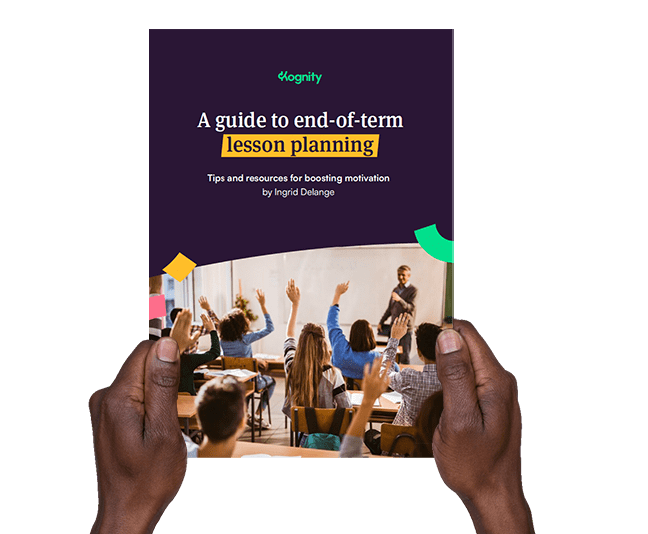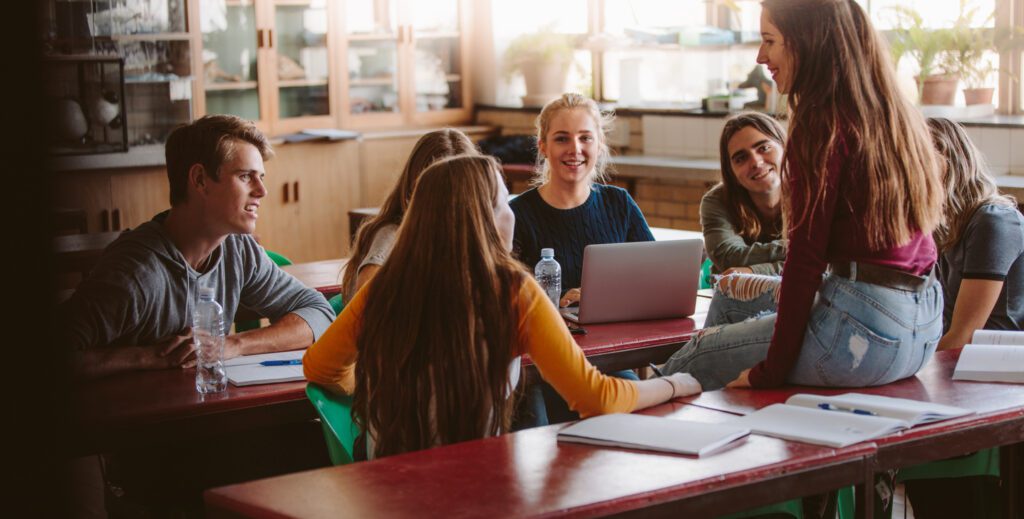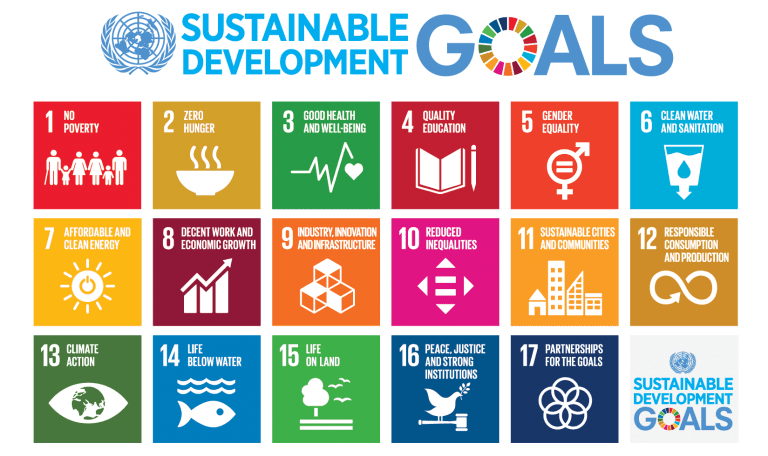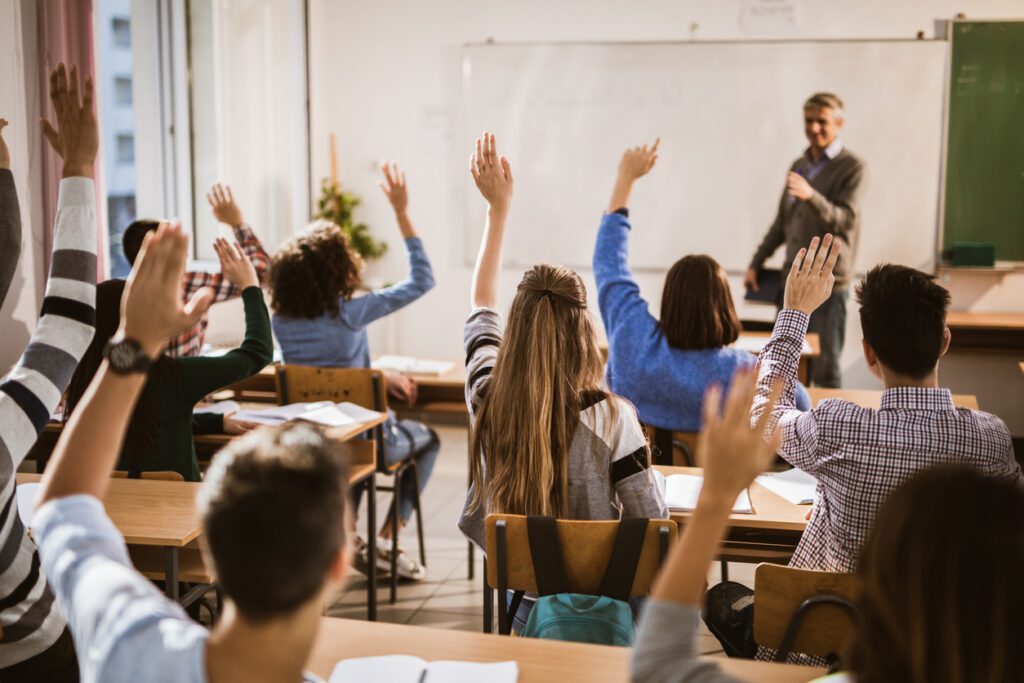End-of-term lesson planning: tips and resources to boost motivation
End-of-term lesson planning isn’t easy. The holidays are in sight, the curriculum is (nearly) finished and motivation to do schoolwork is waning. ‘Senioritis’ is defined by Southern New Hampshire University as “the lack of motivation felt by students who are reaching the end of their courses”, and this can affect the whole school community – teachers included!
But all is not lost! Using the resources and strategies below, you and your students can make the most of every last moment of the term, and even take the opportunity to discover something new. While some of these strategies require a fair amount of preparation, many of them involve virtually none. They’re in three main categories:
- Outside-the-box curriculum review
- New perspectives and skills
- Projects and gamification
Access the full guide
"*" indicates required fields

1. Outside-the-box curriculum review
The end of term can be the perfect time to catch up on all the holistic or creative learning that you didn’t have time for earlier in the year. Here are some suggestions that won’t leave you swamped with complex preparation.
Harkness discussions
Preparation time: minimal
Harkness discussions are one of the easiest yet most efficient methods for reviewing content and getting students to engage critically with their learning. At first glance, these activities can look like Socratic seminars or Shared Inquiry teaching – which are also great for the end of term – but Harkness discussions are more student-centred.
The classes start with a stimulus. This could be a quote, an article, or even an open-ended topic from a previous lesson. Students should analyse the material and react to it, developing a set of questions that will form the backbone of the discussion. If they struggle, the teacher throws in an exploratory question aiming at an open-ended discussion. Rather than focusing on finding a “right” answer, the class should embark on an active search for meaning using their knowledge and skills.
For IB teachers, the TOK guide and Kognity’s TOK materials are great sources of open questions and inspiration. Harkness discussions are very effective ways to review content, and they also help to develop and consolidate students’ thinking, listening and communication skills. This applies to all subjects, even those in which students sometimes assume that there is less scope for open-ended discussion (Mathematics is a common example).
Preparation is minimal. You just need a stimulus, a few questions and a piece of paper to track students’ speaking time. The teacher plays the role of a moderator and timekeeper, encouraging everyone to contribute and facilitating reflections on participation. The teacher can also step in as a sage or prompter if necessary, but they should mainly just be a caring and supportive presence. Silence, dead ends and frustration are completely natural and should be acknowledged in reflections – since students are polishing their communication skills here, this is a valuable lesson in itself.
For more detailed guidance, check out Willett’s Student Guide to Harkness Discussion.
Sustainable Development or Service activities
Preparation time: minimal
The school year is usually so busy that serving the wider community comes a distant second to academics. Students end up short on time for the meaningful service activities they had imagined, and teachers often feel frustrated that they can only hint at the Sustainable Development Goals (SDGs) in passing.
But now that this term’s content is (pretty much) covered, it’s time to indulge in something more hands-on!
Let students’ creativity and problem-solving skills run wild. Set them a task where the only requirements are to select one of the SDGs or some form of Service, and to use some of the knowledge or skills from the year’s curriculum. Their task is to be innovators and changemakers, or at least to raise awareness. The beginning is usually chaotic, and students can find it daunting to have so much freedom. The sustainability compass is a nice tool for developing their critical thinking skills and identifying a real-life problem that they want to solve.
If your school has a sustainability lead or a CAS coordinator, they can be your allies and help the students to generate ideas. Their resources, their real-world experience and their grasp of the needs in the community will all be inspirational.
Show your students Ashoka’s Stories for Early Changemaking and Design for Change’s ‘I Can’ stories, to demonstrate how diverse and meaningful these activities can be, as well as the impact they have on the community. If you have MYP students, they may want to apply for the Student Innovators’ Grant programme. Stanford University’s Tools for Taking Action and Fixperts’ flexible learning programme also provide students with great resources and inspiration for designing a project and taking action.
If they are empowered as designers, students will be at the centre of their learning. The teacher becomes more of a collaborator or mentor in the creative process, setting high expectations in terms of pace, collaboration, organisation and quality.
Sustainability, Innovation or STE(A)M competitions
Preparation time: minimal
At this time of the year, students might not be excited about embarking on another project – especially if it won’t be graded. An external stimulus might help them to find motivation, and international competitions are great for this. There are plenty around. Although the timing of some competitions may not be ideal, many of them run every year, so the end of term can be ideal for preparing or planting seeds of creativity in students’ heads.
Here’s a brief list of organisations running international competitions and initiatives, just to give you an idea of what is out there.
Getting the students to find a competition for themselves could even be a great initial task!
2. New perspectives and skills
If you’re expecting your students to have an innovative and creative attitude, why not model it yourself by breaking up their routine? While this may require a bit more planning on your part, it’ll be worth it!
Visits or guest speakers
Preparation time: substantial
Bringing in guest speakers or running visits to nearby museums, factories, labs or natural sites can be great opportunities to make them think beyond their school (and the internet).
If you have students in the first year of the IB Diploma Programme, this can be a great way to get them started on Internal Assessments and Extended Essays, which can seem overwhelming. Preparing for those assessments in a less formal manner can be a way to level down their anxiety and help them to generate ideas. To get the most out of this, though, it is important to make students part of the planning process. They should not see themselves as tourists or an audience to entertain. They need to be clear on the aim of the activity and thus have a good grasp of their IA and EE criteria. If they understand the ‘why’, they are more likely to fulfil the requirements.
Once they understand the ‘why’ and the aims, students need to be able to view their surroundings with fresh eyes. Training them to see beyond the surface and make novel connections is paramount for a successful experience. Creativity begins with observation, and observation needs to be actively taught. The Library of Congress teacher guides and the National Archives document analysis worksheets have some good examples of how to develop a critical eye when working on primary sources. My favourite, however, is Project Zero’s Thinking Routines Toolbox. It has an amazing range of simple techniques that truly work wonders for developing observation skills and lateral thinking.
Finally, focus on collaboration and responsibility. You don’t want to have the same, hard-working students doing all the work! So make them assign themselves specific tasks, such as question preparation, interviewing, recording, identifying hypotheses and so on. With a well-prepared thinking hat on, trips and visits can truly be inspirational.
MOOCs that develop students’ wider interests
Preparation time: minimal
Sometimes students have a special interest in a topic not covered by the curriculum, or an idea that cannot be addressed in class. Why not take advantage of the free courses on MOOC platforms?
Here are a few websites to get you started:
MOOCs are fantastic tools for nurturing students’ curiosity and personal development. Students can conduct their study independently or in small groups. Following MOOCs collectively helps create a dynamic of collaboration and a ‘positive peer pressure’ that keeps up the pace and improves outcomes.
MOOCs can also give students who are unsure about their university plans some exposure to the range of courses offered at university level. Moreover, MOOCS are highly regarded during university applications, as they allow students to demonstrate personal engagement outside their comfort zone.
Outdoor and Experiential Learning
Preparation time: substantial
Based on the concept of “learning by doing” developed by Dewey, Kolb and Rogers, experiential learning takes students through a cycle:
In any class where the learning outcomes are flexible and the focus is on developing knowledge and skills through experience, there may be elements of experiential learning. For inspiration, read this article from Northern Illinois University’s Center for Innovative Teaching and Learning.
But by the end of term, this approach might not be enough to trigger enthusiasm. To take things to the next level, why not make the outdoor environment central to the learning process? Adventure and nature camps are fantastic opportunities for your class to focus on the cognitive and emotional aspects of learning. Spending time in nature can also be very therapeutic for students after a busy and stressful year. There are a plethora of providers out there, offering programmes with an emphasis on the environment and conservation, adventure, life skills, culture and more.
Through experiential learning methods, students enjoy meaningful experiences, develop their problem-solving and reflection skills, push their personal boundaries, build trust and come together as a group. They typically feel more confident to take risks and try unfamiliar activities in a context where they know they won’t be graded, so any failures feel more like learning opportunities. An open-minded approach and a willingness to rely on their peers’ support is key to their progress.
3. Projects and gamification
At some schools, teachers feel pressure to carry on “teaching properly” and delivering content right up until the last day of term. Service units and STEAM or product-based learning are great educational approaches that will keep your administrators happy and get your students engaged in meaningful projects.
Service Learning and Ethical Thinking
Preparation time: substantial
In Service Learning, students use their academic knowledge and skills to collaborate effectively in the community or with non-profit organisations. They might engage with the community through direct service, perhaps by tutoring or supporting a specific section of the school or community. It can also take the form of indirect service, for example organising a fundraising event or supporting wellbeing in the school or wider community. Advocacy is also a great way for students to get involved in a Service component, writing to officials and supporting local or global campaigns. The focus might be sustainability, social justice, global challenges, animal rights, culture, education, literacy, health, wellbeing… the list is endless!
According to The Good Project, “Doing good starts with you”. This statement may seem obvious, but it is actually loaded with meaning. To embark on a Service Learning project, students have to go through the process of properly defining what ‘good’ actually means. Teachers should reflect on how their teaching can result in the class taking action and working for a better world, as the correlation is not always strong. Mihaly Csikszentmihalyi and his team have developed a series of tools for analysing this inconsistency, and they provide a wide range of activities and lesson plans to help educators shape the ethical citizens of tomorrow.
Just modelling ethical thinking isn’t enough. It is important to raise awareness and empower the class to take action. Students should feel that they can play an active role in the solution, or at least be a part of it. For further inspiration, check out the following:
- IBO introduction to Service Learning
- Lesson plans from Learning for Justice
- Resources from World’s Largest Lesson
Service learning and ethical debates never fail to enrich learning. They help students to put newly-acquired knowledge and skills into context, enabling them to bond with their (extended) communities. Students also benefit from reflecting on different perspectives and ways that they can do good. In short, it helps them to think about their own roles as citizens.
Transdisciplinary and interdisciplinary units, STEAM and product-based learning
Preparation time: substantial
When students’ brains cannot cope with any more content, it is important to root any new input in concrete applications or create links with other subjects. If you’re looking to make the last few weeks of term more active, but want to keep the focus on any knowledge and skills that you still need to teach, a carefully-crafted interdisciplinary or project-based learning unit could be the solution.
Where to start? Understanding what is involved in each of these teaching styles is key to success, as they require a significant amount of scaffolding and planning. Product-based learning is not the same as experiential learning, and transdisciplinary is not the same as interdisciplinary. They can be combined to build a unit, but their goals are not the same. Product-based learning involves working towards the completion of a specific product (which is decided on at the beginning), whereas experiential learning focuses on acquiring knowledge and skills through experience and has no specific objective. Participate Learning’s guide to product-based learning has lots of insights and information.
Transdisciplinary and interdisciplinary units both provide opportunities to consider a given issue from different disciplinary perspectives. However, transdisciplinary methods go the extra mile in helping students to transcend individual disciplines and collaborate on solutions to global issues.
How does it work in practice? Getting students to develop a product or a performance is not difficult, but getting them to develop a good one is more tricky. To ensure it does not turn into a box-ticking exercise, students need to show curiosity and creativity. The IBO’s research on recording curiosity and creativity can be useful here.
If you’re still unsure how to proceed, here are a few amazing websites offering free product-based and STEAM lesson materials to get you started:
Gamified learning
Preparation time: minimal
Gamification doesn’t have to mean creating a game from scratch. Sometimes it’s enough to use the rules of existing games in your lessons. Even awarding students points and rewards for completing tasks is a form of gamification. Introducing elements of competition to lessons – and even a sense of jeopardy – can really help with motivation.
There are loads of online tools for running quizzes, Kahoot obviously being a popular one. But don’t forget you can also get students up and moving around the room with an old-fashioned game of Pictionary, charades or Taboo!
For an exhaustive guide to gamification, check out this chapter of the K-12 Education Technology Handbook.
But a happy and purposeful end to the term need not only be down to the teacher! Why not get your students to develop gamified activities? Peer learning takes many forms, and students can create assessments or fun projects that will enhance their friends’ learning.
And finally, if none of these strategies work… My own class loves nothing more than regular, well-designed Kognity assignments!????
What are your favourite end-of-term teaching strategies? Let us know in the comments!
Further reading
Blog articles White papers







